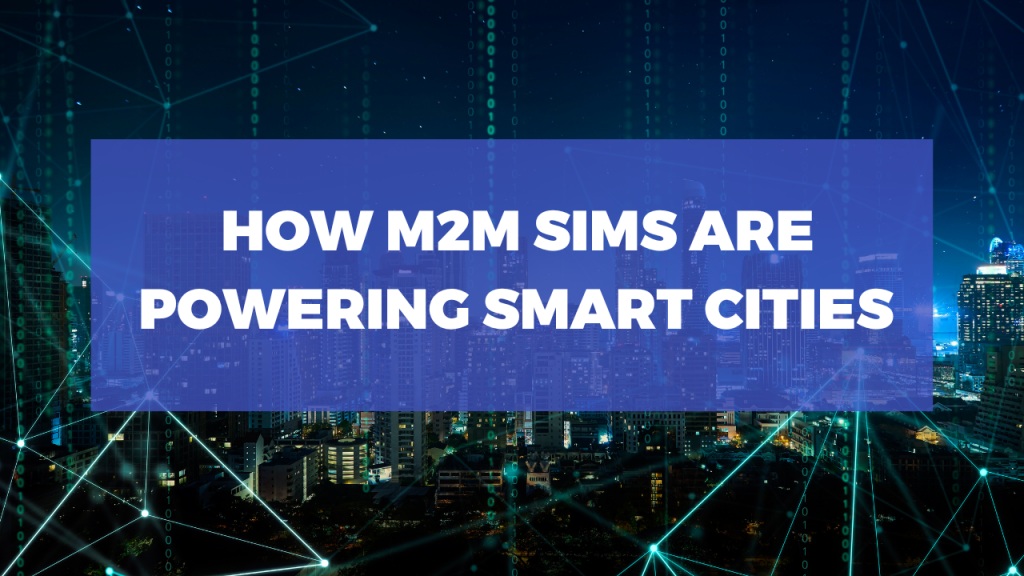
Cities are getting smarter and as a result quality of life and responsiveness is improving. But what’s interesting is the smart city initiatives we are seeing today are just a small glimpse of what technology could eventually do in the urban world.
So what exactly is a smart city? Well, it’s a technologically modern urban area that uses multiple ways to collect data with electronic methods. The information obtained is used to manage assets, resources and services efficiently to improve operations across the city greatly.
A smart city is one that is. With the use of technology, a smart city can address issues on mobility, population growth, pollution, climate change and so much more.
The M2M applications used for smart city infrastructure
Internet of Things (IoT) and M2M technologies sit at the core of smart city infrastructure and initiatives – an essential part of urbanisation – and without these technologies, smart cities just wouldn’t exist.
So how exactly is M2M technology used to connect and transform our cities?
Remote sensors
Remote sensor data from disaster monitoring, climate prediction, traffic flow and remote monitoring presents a huge number of insights for smart city applications. Much of smart city planning is about keeping everyone safe and mitigating risks.
For example, when looking at flood risks, M2M technology can be used to detect early changes in the weather, monitor flood levels in risk areas and send out alert warnings to an official in charge of disaster prevention.
Security and CCTV
From surveillance cameras to street lighting and motion detectors to public access points. M2M connectivity within city security provides multiple data points to identify any upcoming dangers or risks and even false alarms and manage physical accessibility (with its ability to unlock doors).
Intelligent Traffic Management
Congestion is an ongoing issue for many cities but AI-powered software means cities can implement ‘smart roads’ which can manage traffic flows, direct traffic lights and identify diversions.
It also provides insight which can better support environmental sustainability helping cities to find ways to reduce pollution.
Most recently, we worked with Urban Sensing a counting systems manufacturer to implement Global MSM SIM to all of their UK devices and overseas too. We were able to help provide a traffic management solution with an uninterrupted IOT data connection to ensure the cities it accommodates stay safe, smart and connected.
You can read more on how we helped Urban Sensing here.
E-Scooters
Electric Scooters have taken the UK by storm, in today’s world you can’t step onto a high street without seeing E-Scooters dotted around. E-Scooters have made transport for communities more accessible and are limiting the need for cars for short journeys.
In order to monitor the whereabouts of scooters, they’re all equipped with in built SIMS to allow them to be rented by users, tracked and send battery statuses to the companies that own them and are also able to prevent them from going in to areas they are not allowed.
Utility meters
Smart meters are becoming increasingly popular as energy prices continue to fluctuate. These devices are attached to buildings and connect to a smart energy grid – meaning utility companies can manage energy flow more efficiently. Smart meters also allow consumers to manage their monitor their energy consumption and potentially reduce their carbon footprint.
Not only that but they also allow users to track and manage their energy consumption through their mobile devices.
Robots
Arguably the coolest tech from the list, Robots. Robots can do pretty much anything these days, from driving greater efficiencies in our manufacturing and production lines to driverless cars. In some cities, they’ve been put in place as alternatives to security cameras.
Did you know that in 2018, M2M Global SIMs’ hometown Milton Keynes even became the first town to launch autonomous robots! They are small white boxes on wheels that can deliver food and parcels to your door from anywhere around the city. You can read more about them here.
The future of powering smart cities with M2M SIMs’
M2M SIMs’ can connect anywhere at any time as they’re not connected to a single network. They can allow the device to switch between networks and typically connect to the strongest available signal. This mitigates any downtime in loss of connectivity. Cellular connectivity is driving the evolution and the opportunities it presents to smart city initiatives are endless.
The growth we’re seeing in cities today will drastically accelerate for the better in the future and the digital divide between data and technology will shrink. Let’s see what the future holds.
No Comments yet!